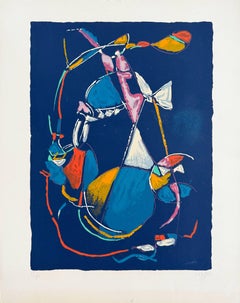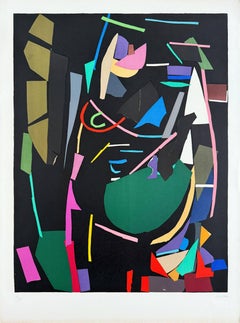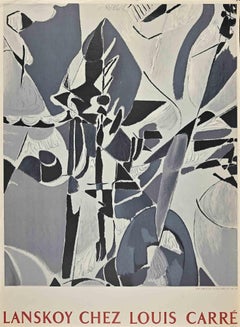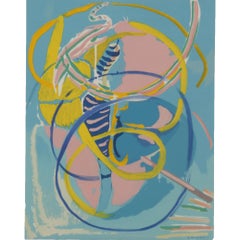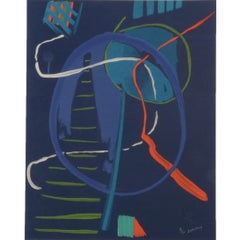André Lanskoy On Sale
1950s Surrealist Abstract Prints
Lithograph
1950s Surrealist Figurative Prints
Lithograph
1950s Modern Abstract Prints
Lithograph, Offset
Mid-20th Century Abstract Abstract Prints
Archival Paper, Lithograph
Mid-20th Century Abstract Abstract Prints
Archival Paper, Lithograph
Recent Sales
Late 20th Century Abstract Abstract Prints
Lithograph
Late 20th Century Abstract Abstract Prints
Lithograph
People Also Browsed
1960s Abstract Expressionist Abstract Prints
Lithograph
Mid-20th Century Abstract Abstract Prints
Archival Paper, Lithograph
Mid-20th Century Abstract Abstract Prints
Archival Paper, Lithograph
1960s Abstract Abstract Prints
Lithograph
1970s Abstract Abstract Prints
Lithograph
1960s Abstract Abstract Prints
Lithograph
Mid-20th Century Abstract Abstract Prints
Archival Paper, Lithograph
2010s Abstract Abstract Prints
Archival Ink, Archival Paper, Lithograph
André Lanskoy for sale on 1stDibs
André Lanskoy was one of the great painters of the École de Paris and of the second mid-twenty century. André Lanskoy was born Andrei Michailovich Lanskoy in Moscow in 1902, the son of Count Lanskoy. The family moved to St. Petersburg in 1909 and in 1918, he moved to Kiev, where he made his first paintings. During the Russian Civil War, Lanskoy fought in the Tsarist White Army but after an injury, moved to Constantinople. In 1921, he arrived in Paris, where he stayed for the rest of his life. Recalling his arrival in the French capital, Lanskoy said: "Literally in the first night I started to paint and I haven’t stopped since." Lanskoy's figurative pictures and still lifes of that period were inspired by Van Gogh, Matisse and Soutine. In 1923, André Lanskoy qualified for the Salon d'Automne, where he was discovered by the art dealer Wilhelm Uhde, a valuable contact who helped him gain his first solo exhibition in 1925. Lanskoy went on to exhibit with those of Robert and Sonia Delaunay, Léopold Survage, Ossip Zadkine and other Russian artists in Paris. Soon Lanskoy's works could be found in museums and important private collections. Towards the end of the 1930s, the artist slowly gave up figurative painting, and by 1943, had turned entirely to non-representational painting. In his continuous quest for new means of expression, he turned to the illustration of books, tapestries, mosaics and collages. André Lanskoy maintained a deep friendship with Nicolas de Staël, with whom he held a joint exhibition in 1948. During this time and the following decade, the artist gained international acclaim through exhibitions, including one showcasing late works at the New York Fine Arts Associates in 1956. The artist participated in II. documenta in 1958 alongside other artists of the Informel movement and in the exhibition "Les Peintres Russes de l'école de Paris" at the Museum of Art and History Saint-Denis in 1960. He is considered one of the most important exponents of lyric abstraction within the École de Paris. André Lanskoy died on August 22, 1976, in Paris.
Finding the Right Abstract-prints-works-on-paper for You
Explore a vast range of abstract prints on 1stDibs to find a piece to enhance your existing collection or transform a space.
Unlike figurative paintings and other figurative art, which focuses on realism and representational perspectives, abstract art concentrates on visual interpretation. An artist may use a single color or simple geometric forms to create a world of depth. Printmaking has a rich history of abstraction. Through materials like stone, metal, wood and wax, an image can be transferred from one surface to another.
During the 19th century, iconic artists, including Edvard Munch, Paul Cézanne, Georgiana Houghton and others, began exploring works based on shapes and colors. This was a departure from the academic conventions of European painting and would influence the rise of 20th-century abstraction and its pioneers, like Pablo Picasso and Piet Mondrian.
Some leaders of European abstraction, including Franz Kline, were influenced by the gestural shapes of East Asian calligraphy. Calligraphy interprets poetry, songs, symbols or other means of storytelling into art, from works on paper in Japan to elements of Islamic architecture.
Bold, daring and expressive, abstract art is constantly evolving and dazzling viewers. And entire genres have blossomed from it, such as Color Field painting and Minimalism.
The collection of abstract art prints on 1stDibs includes etchings, lithographs, screen-prints and other works, and you can find prints by artists such as Joan Miró, Alexander Calder and more.
